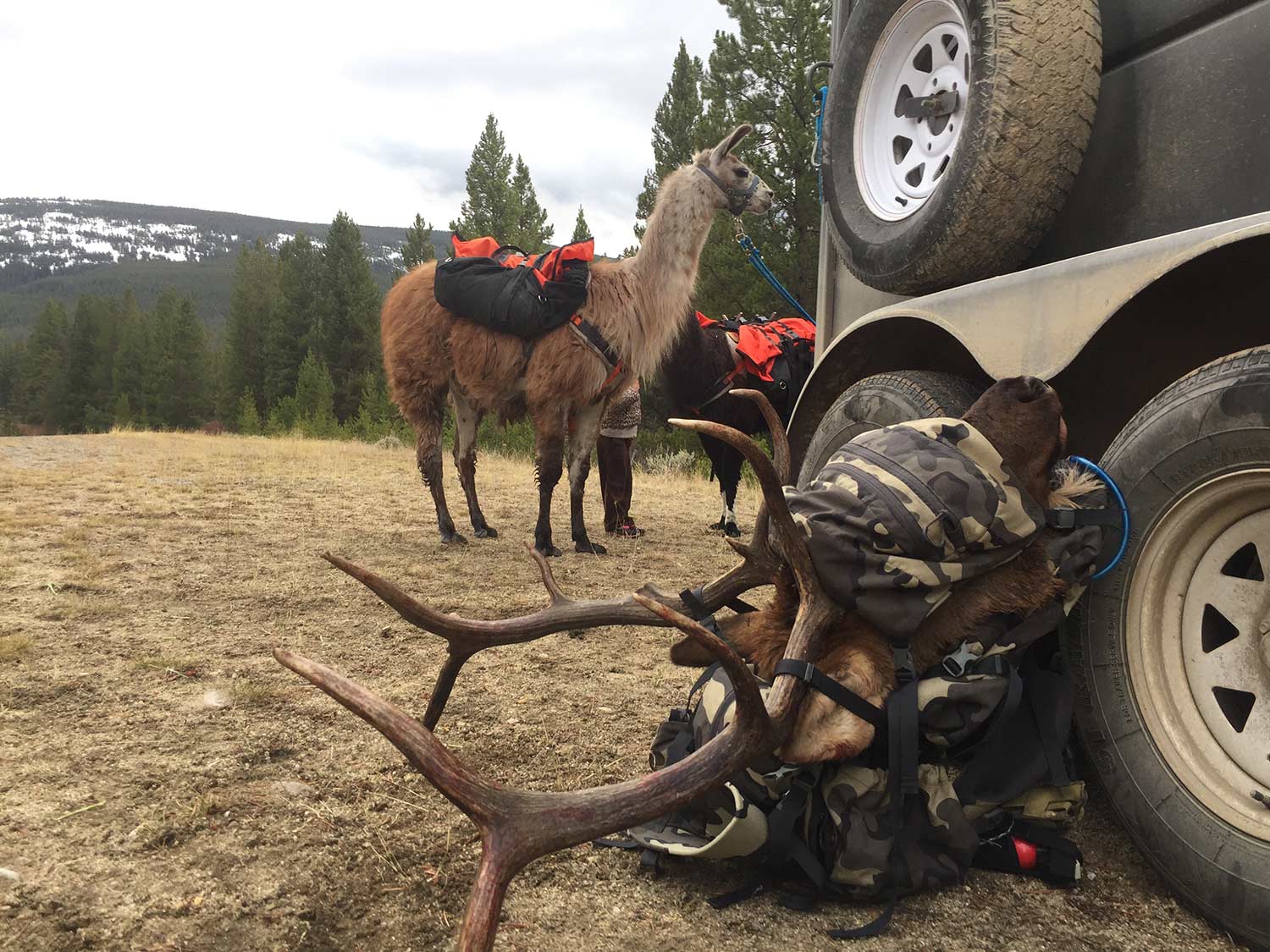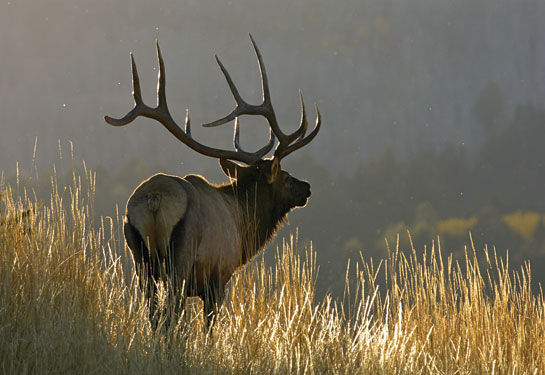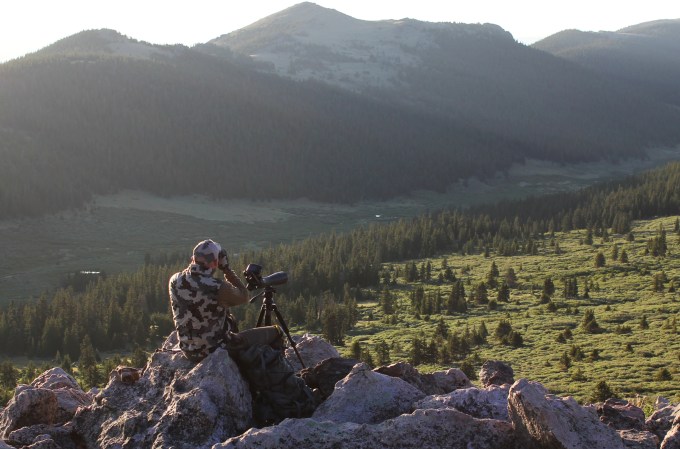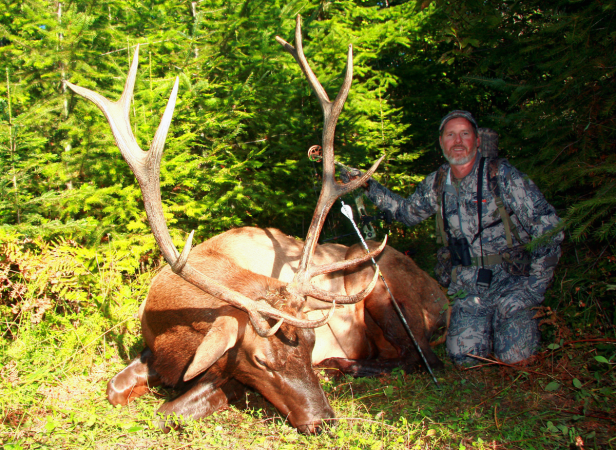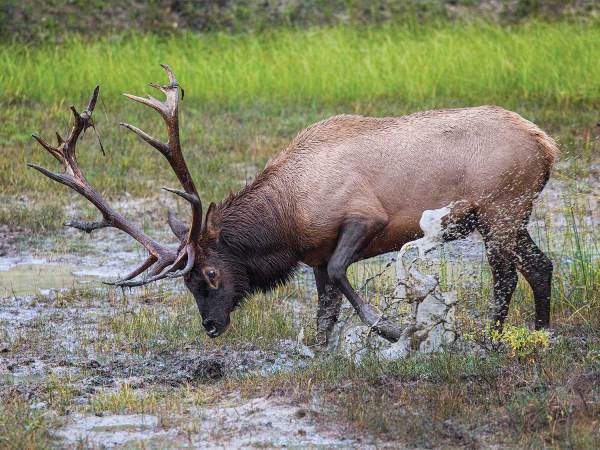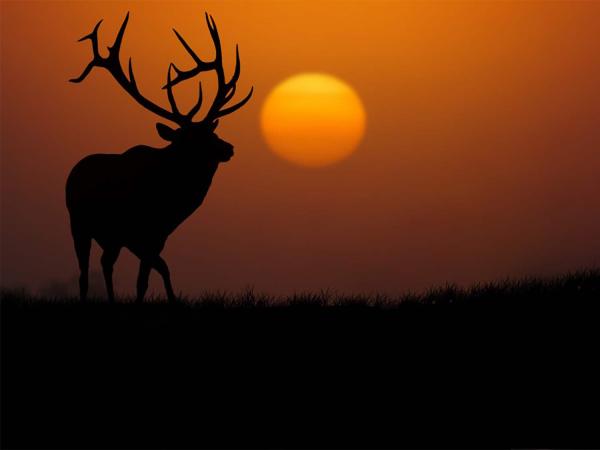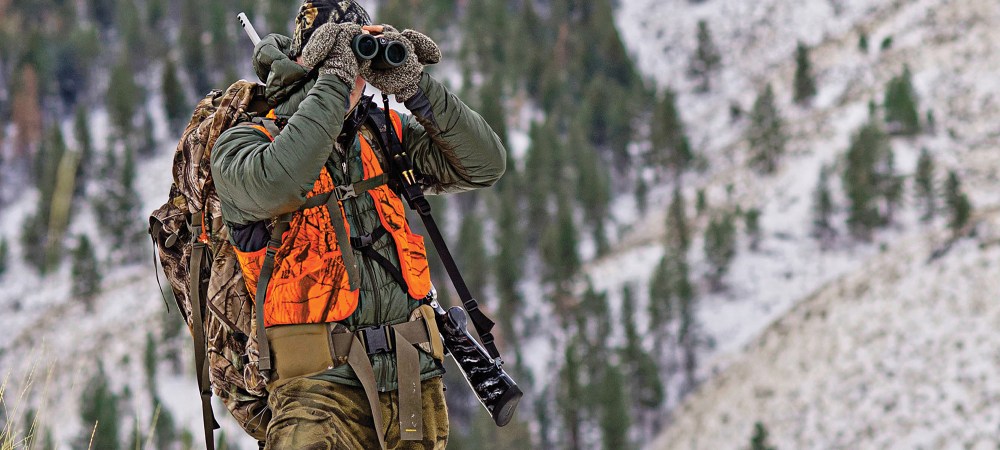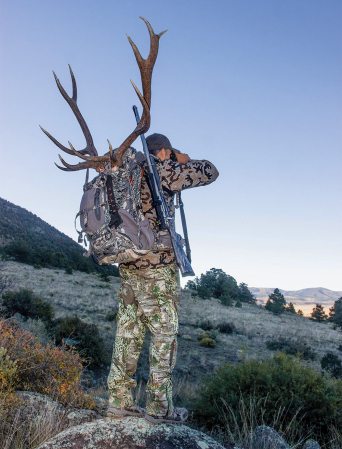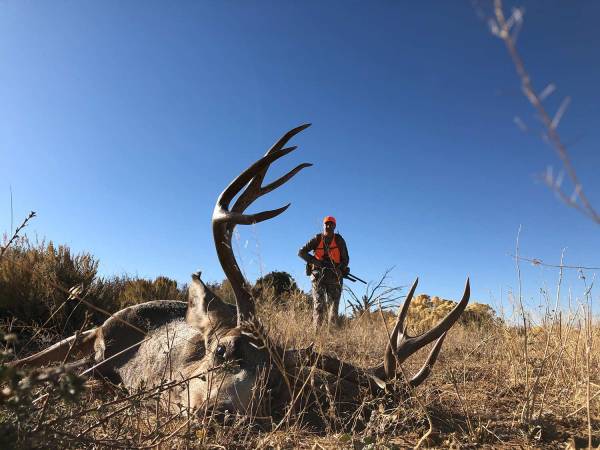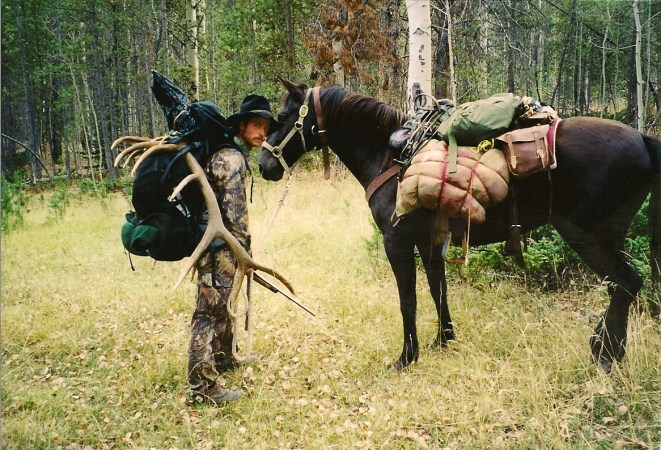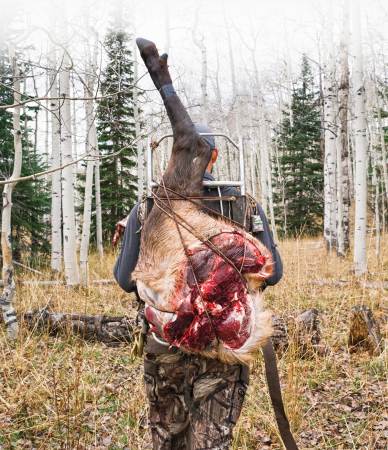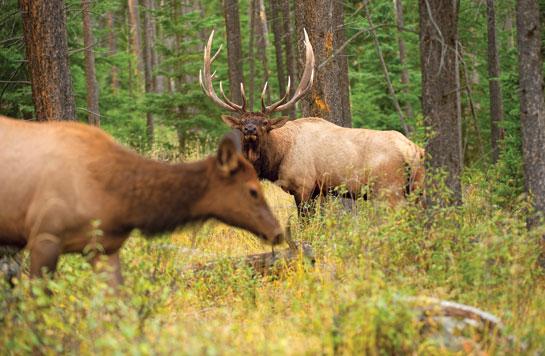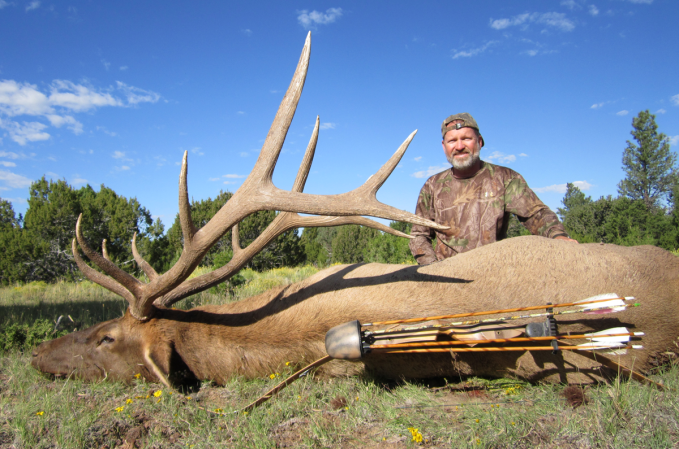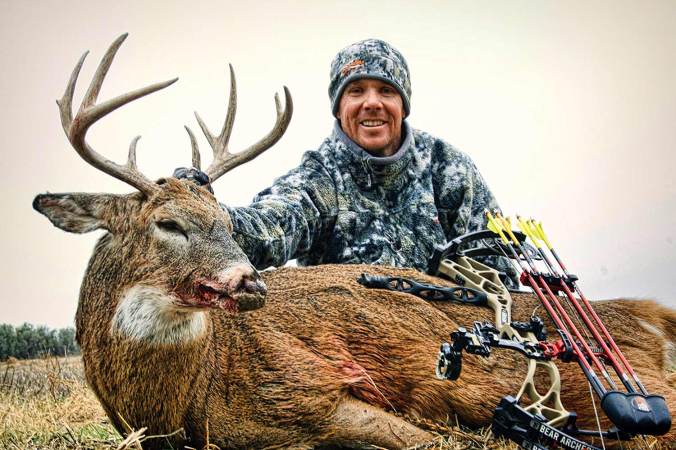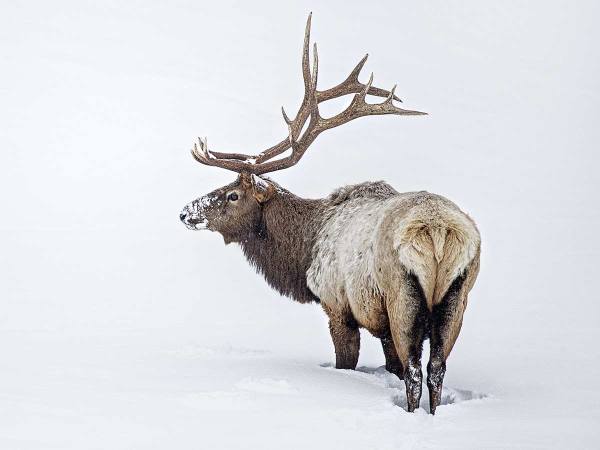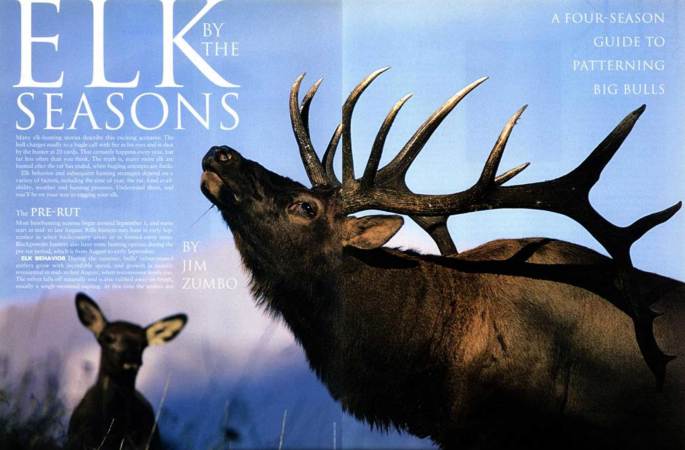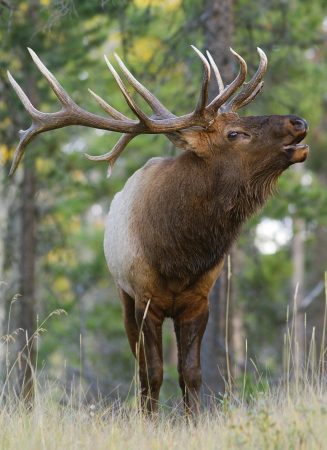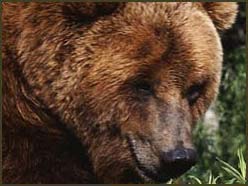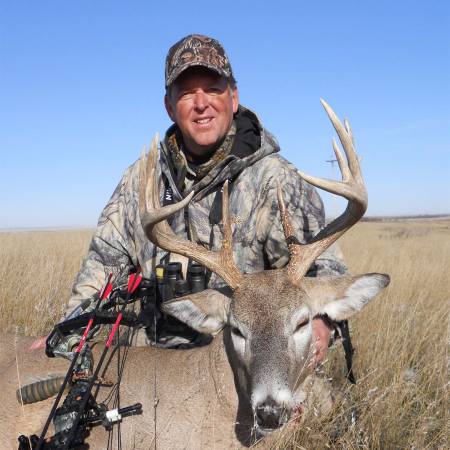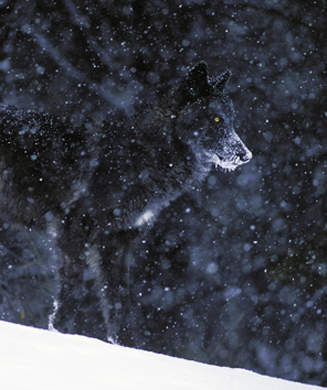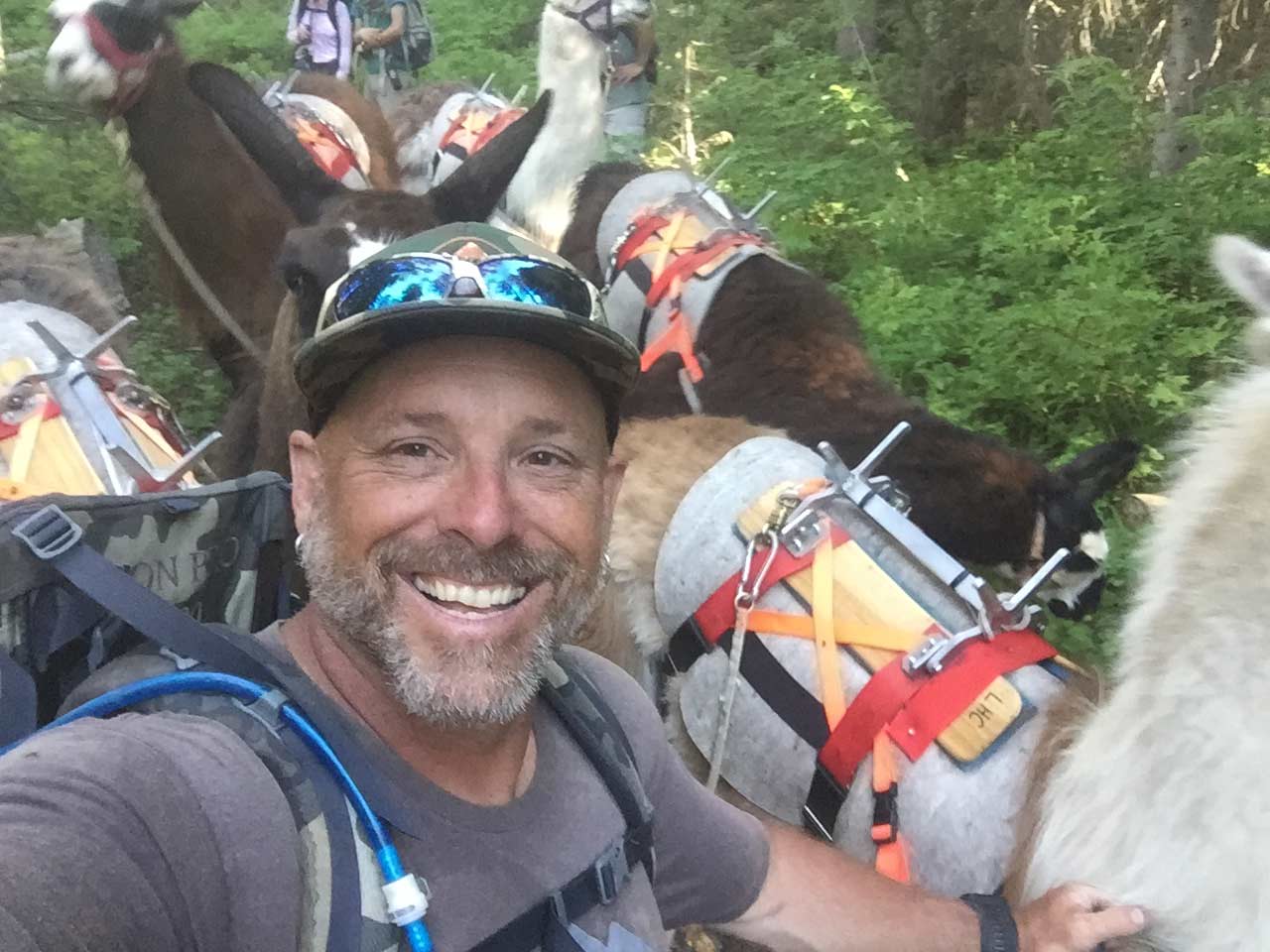
Mark Livesay is a Missoulian from Missouri who came to Montana to do even more of what he loves most—DIY elk hunting. Last year he hunted every day but two of September (with one 21-day stint in there), and only missed one week of October. “I’ll break those records this year,” he says. (He is entering his 30th year of elk hunting.)
Livesay uses llamas to pack in and out—“They’re wonderful, calm, and sturdy animals,” he says—and spent 108 nights in a tent over the whole year. “I’ve been elk hunting since my 20s, but I lived in Missouri. That meant traveling—a lot. I spent my first 26 years of elk hunting driving back and forth out to New Mexico, Wyoming, Colorado, those front-range western states.”
Like any other hunter not from elk country and coming west, there were a lot of articles to read about finding the right state, ratcheting down to a unit, drawing the tag, and all that,” he says. “But it all ended there. Nothing about scouting or finding the exact spots—and spots within the spots—to hunt.”
So Livesay developed and honed an elk-scouting process that has blossomed, leading to the founding of a company called Treeline Pursuits. Now he specializes in digital scouting and other elk-hunting tips with instructional Youtube videos that combine old-school maps and materials (still valuable) with new-age digital tools and opportunities. So, get ready. Here’s a deep-dive into Livesay’s six-step digital elk-scouting process.
The Goal: A Written Hunt Plan
“Coming from east to west, I had to really maximize my hunting time,” says Livesay. “I still want to do that when traveling to hunt within the West. That’s why I started the technique of developing a written Hunt Plan.
“That’s key to my strategy. Not just marking or making notes on map margins,” he explains. “I’m talking about a written plan that outlines multiple hunt areas, makes backup plans, and identifies campsite options. Everything I do works toward creating a master written Hunt Plan.”
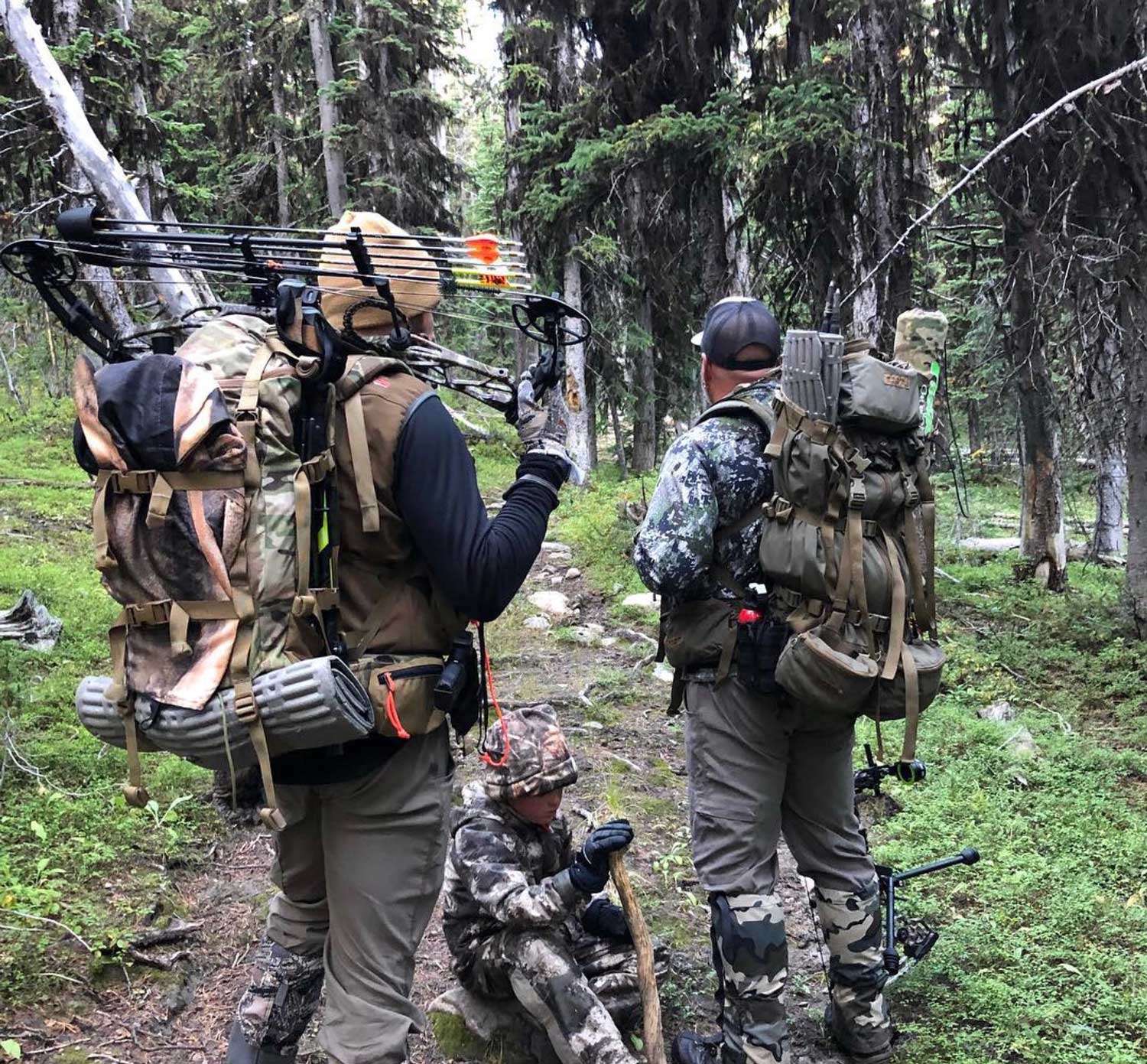
It’s not overkill if you want to kill an elk. “The personal pressure is on, and everything adds up when you’re on an elk hunt,” says Livesay. When you’re away from home, at elevation, low on calories, and pushing yourself harder than in your training, you can only go on like that for so many days.
“I’ve seen so many guys start to crumble and crack under that mental fatigue and physical strain,” says Livesay. “Your Written Hunt Plan saves you. Pull it out, read it in the tent at night, get some options, and re-energize. It’s empowerment.”
Step 1: Identify 3 to 5 Different Hunt Areas
“The key and core of the process is developing three to five ‘Hunt Areas’—geographical, targeted places in which I could conduct my entire hunt if needed,” says Livesay. “You do this—pick out distinct hunt area options—because you just don’t know. You could pick out a spot that looks amazing, and you get there, and there are a dozen trucks at the trailhead. Or cattle or sheep everywhere, or roads washed out, and you can’t even get there.”
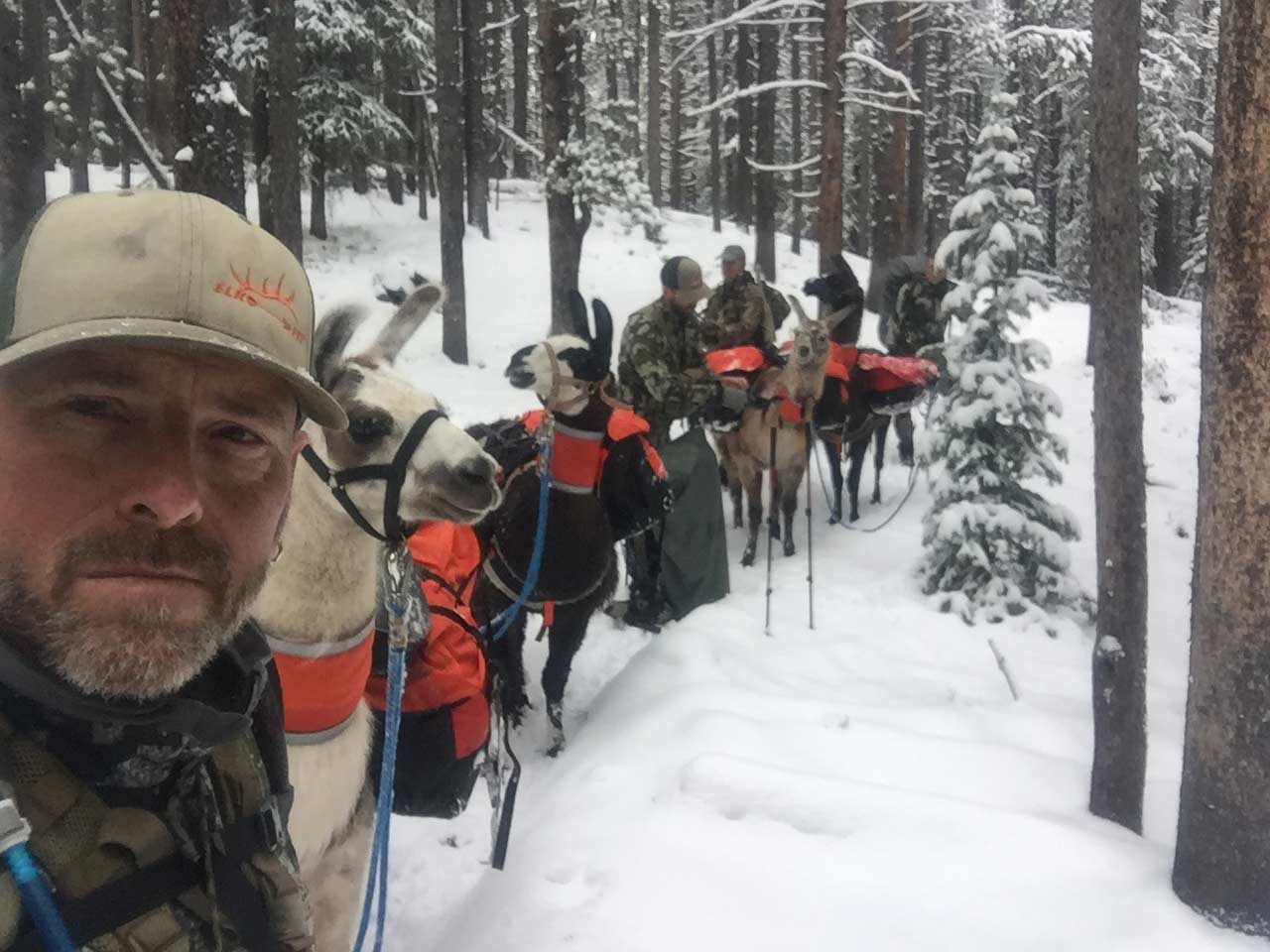
Or maybe there just aren’t any elk. “Having separate, distinct hunt areas to go to is critical. At least one or two of your five areas should be at radically different elevations,” he advises, citing a mid-September Wyoming hunt where 18 inches of snow moved the elk and shut the hunting down, but he had no lower-elevation areas incorporated into his plan.
“You’re crazy if you’re not using onX Hunt and/or Gaia GPS to plan,” says Livesay. “onX Hunt has great private land layers, and I love their color coding and marking. Gaia GPS is more complicated but has more layers, and many critically helpful ones.” Think of hunt areas as macro-areas in which you will later ratchet down to specific elk features and hunting spots (Steps 3 and 4).
Step 2: Download Hunt Area Maps
“No way are you going to get consistent-enough cell phone service to use digital mapping tools live in the field,” says Livesay. “So download and preload maps of all your Hunt Areas.” You will complete the following Steps 3, 4, and 5 for each Hunt Area. (Seems like a lot of work, but do you want to kill an elk or have a nice autumn nature hike?)
Step 3: Establish Zones of Pressure
Next, Livesay uses paper National Forest Service Maps because of their broad scope and reliable road and trail markings to establish ‘Zones of Pressure.’
“Use a piece of cardboard to cut out a circle that equates to two miles across,” instructs Livesay. “Lay that template over the map and center it on every trailhead, established campground, dead-end road, or access point. Then highlight the related circle. Each circle is a ‘Zone of Pressure.’” It’s easy-to-access stuff that most hunters will be in. “Elk can still be killed in the pressure zones,” says Livesay. “But your odds are just so much better outside of them.”
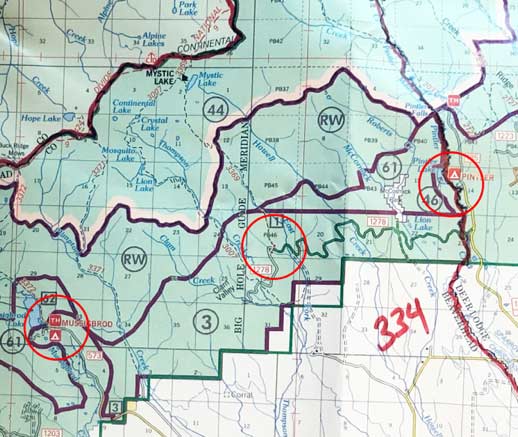
“In a similar fashion, highlight lines a mile on either side of trails, roads, and other marked corridors of travel,” adds Livesay.
Now you know the zones and corridors that get the most hunting pressure. Those pockets outside of the highlighted circles and corridors—or the spaces that are left over after you highlight everything—are the ones to focus on in Step 4. These areas are where you will find actual spots to check out and hunt.
Step 4: Identify Features on the Landscape for Locating Elk
Now your search must go deeper. Much deeper. “Food, water, and security are what elk need,” says Livesay. “Look for these basics beyond the pressure zones. North slopes are naturals in general. But other aspects will hold elk too.” It’s about getting as many of the Elk Landscape Features (listed below) into play and within elk traveling distance. Note that elk can and will move miles between food, water, and cover.
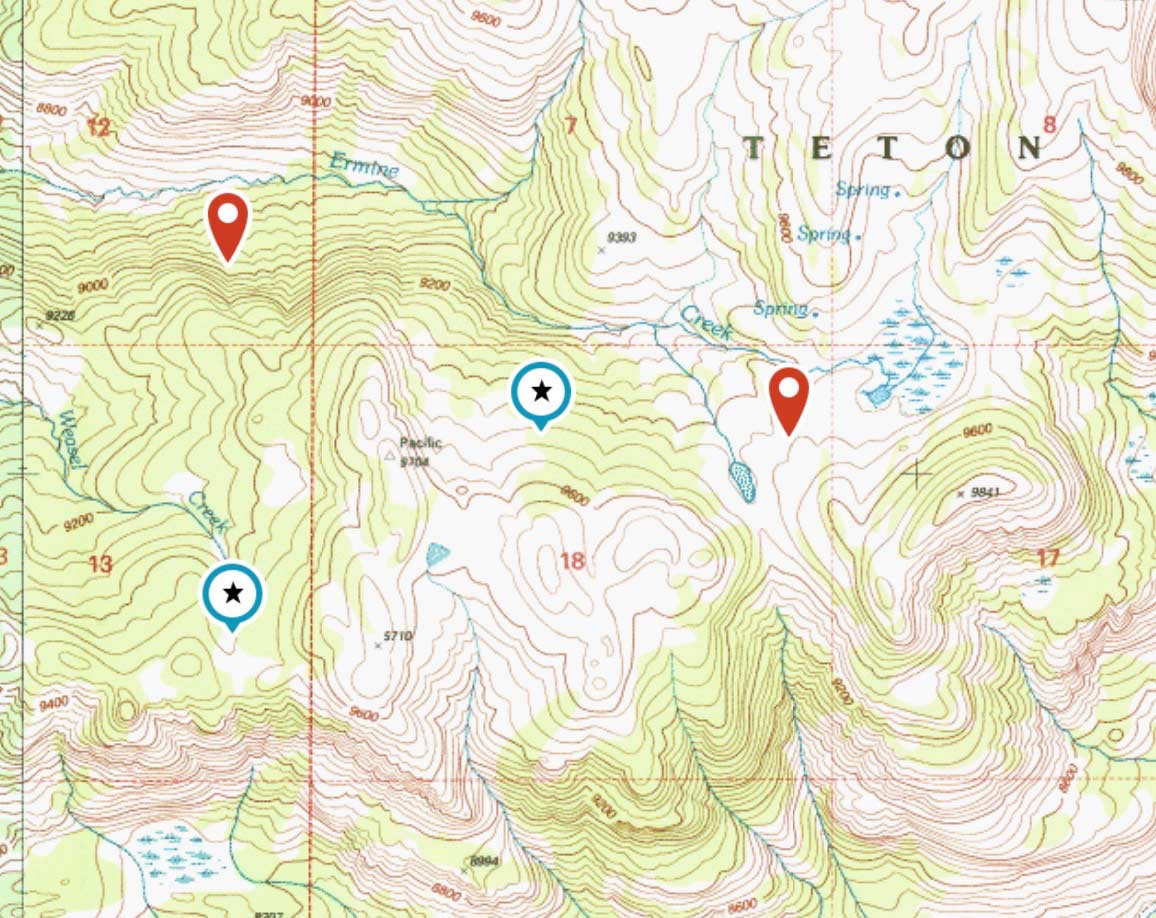
Using a combination of tools (paper maps, onX Hunt, Gaia GPS, and Google Earth) Livesay focuses on the following eight features to home in on actual places (which he calls ‘Points of Interest’) to hunt.
Feature 1: Canyons, Creeks, and Drainages
According to Livesay, all canyons are not created equal. He looks for features like these:
North Slopes: “Natural places to hold elk, with shade and cover,” he says. “East-to-west running canyons or drainages are prime because they will have the most north-facing terrain.”
The Right Steepness: Livesay uses Google Maps with tilt, and layers in Gaia GPS, to look for what he calls “gold zone” slopes of 20 to 30 degrees—just the right steepness elk prefer—not to little slope, not too much.
Benches: “Benches are critical,” says Livesay. “Benches are where elk travel, bed, and socialize. Benches half to three-quarters to the top of a slope are best.”
Flat Bottoms: Canyons with flat bottoms are more likely to have water and pocket meadows than V-contoured drainages. But avoid trail-invaded bottoms. “Use Google Earth to see if there are discernible pathways—hiking trails and otherwise—that would bring hunting pressure,” advises Livesay.
Heads of North-Facing Canyons: Look to these spots in canyons that don’t run east-west.
Feature 2: Burns and Fire Zones
“Burns are elk magnets, but not all are created equal,” says Livesay. “Feed is the attraction. But burns also attract hunters.” He advises looking for burns with fragmented, ragged edges and lots of transition zones—places where elk can always be close to cover. Always consider whether a burn is in a Zone of Pressure or not.
Feature 3: Logged Out Areas
Livesay doesn’t like clear-cuts as much as he does burns, but logged areas can still be productive. “Logging generally means roads and easy access for everyone,” he says. “That’s my main beef. But big tracts way back with lots of funnels, irregularities, and pinch points can be good. Water must be available.”
Feature 4: Steep Country
Livesay says Gaia GPS offers a slope function layer with color codes that can help you look for those 20- to 30-degree slopes elk prefer. Another tool is caltopo.com. Go to these steep areas and find the benches. “The trick is right there—steep country and those benches,” says Livesay. Steep country also weeds out less committed hunters.
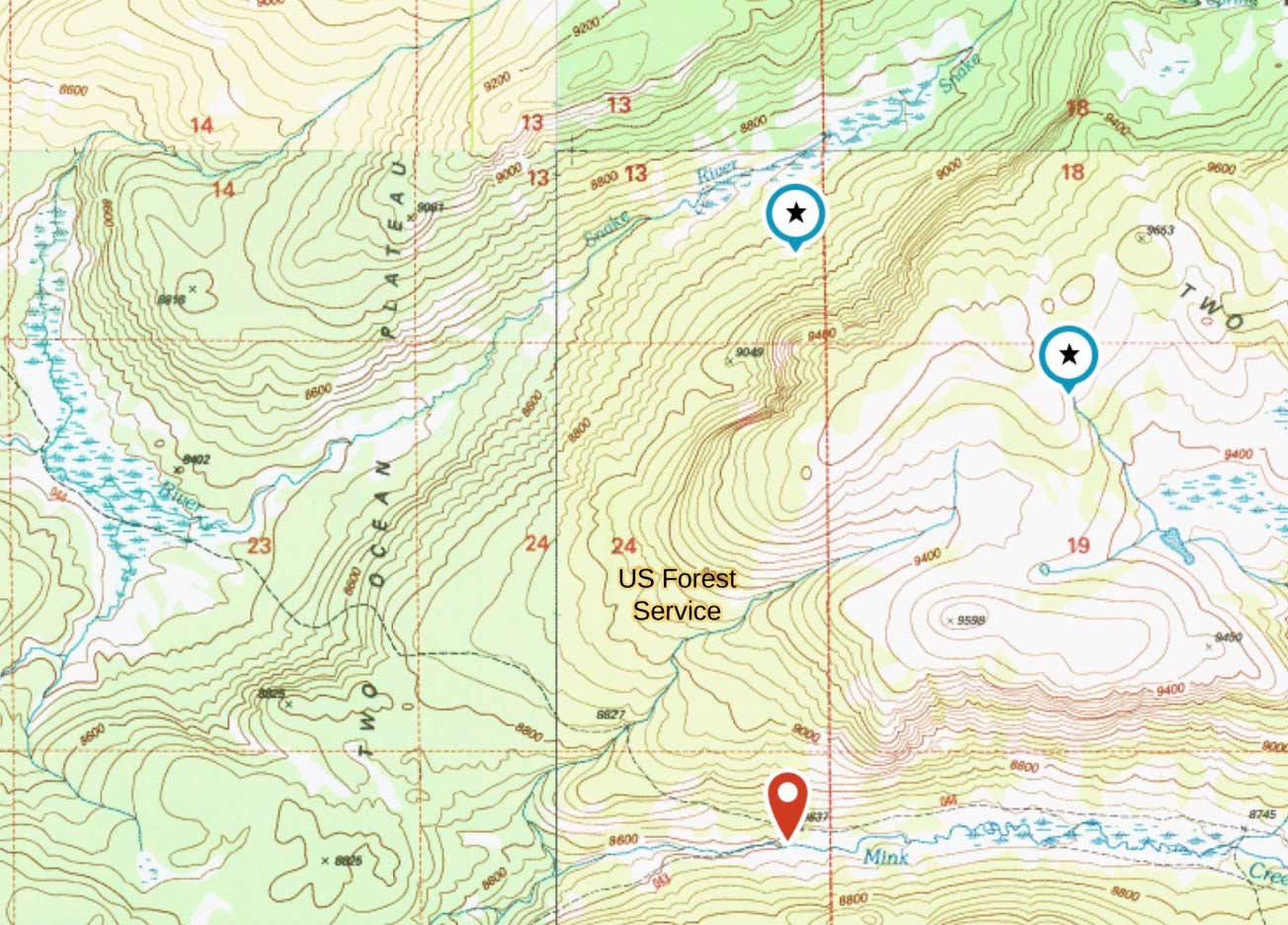
Feature 5: Water Sources
“No water, no elk,” says Livesay. “It’s that simple. Creeks, canyon bottoms, and basins are all places to look. Drop water-points on your map. Elk will travel miles daily for water, but it has to be there.”
Feature 6: Meadows and Feeding Areas
Meadows are prime as key as elk-feeding zones. Livesay has two rules about them:
Meadows must be more than two miles from an access point or road. (Closer meadows may serve elk, but usually only fully nocturnally.)
Go small. “I look for little chains of pocket meadows high up on a ridge,” he says.
One more tip: Use Google Earth’s historical bar to look back at past year’s images and see how green your meadow was in, say, July. Greener equals better feed then and in fall.
Feature 7: Glassing Spots
“Use Google Earth with exaggeration level set to 1.5 and tilt function turned on to locate vantage points and glassing spots,” says Livesay. “I mark all my glassing spots beforehand instead of wandering to search them out.”
Feature 8: Hunting Routes
“So you’ve got canyons, slopes, benches, meadows, water—points of interest that may hold elk,” says Livesay. “Now you need to plan a ‘Hunt Route’ that will take you to them.”
Hunt Routes give you the confidence to be out where you should be at prime times, on the cusps of the day—not on your way to or from camp, worrying about finding your way, before the light runs out when you should be hunting. “Remember,” he adds. “The more you move and hunt off-trail, the better.”
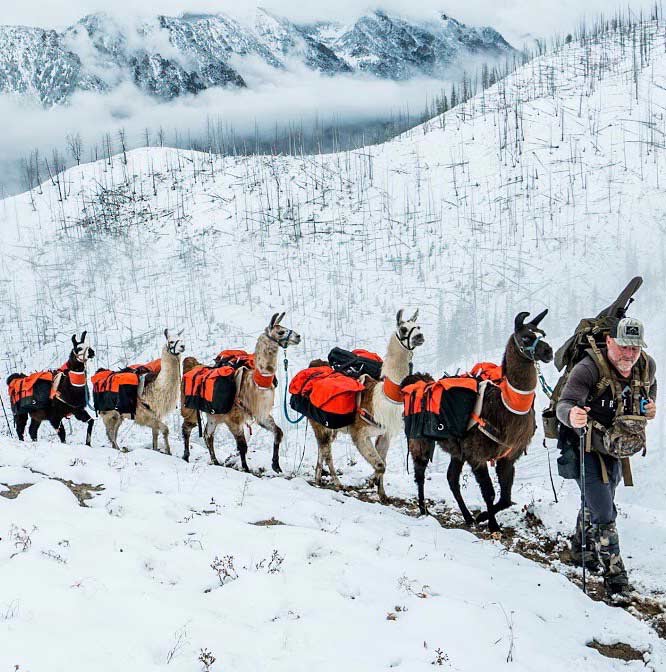
Step 5: Mark Target Campsites
Mark campsite options in Google Earth or onX Hunt, says Livesay. It’s better than stumbling around looking for a spot in the dark. Options let you move if there aren’t elk around or if there are too many hunters. As always with a campsite, you are looking for flat, level ground to pitch a tent; however, you will want to steer clear of meadows that might hold elk. That does not mean you don’t want to be close to your points of interest and hunt areas.
Staying close will allow you to save energy and confidently return to camp in the dark. But the important thing to keep in mind when camping close to hunt areas is to maintain a very quiet camp, keep the smell down, and be mindful of the wind. You will also want reasonable access to water and 360-degree access to hunt areas. Avoid campsites with only one way in and out to a Hunt Area. Lastly, don’t get married to one campsite. Make sure you have options so that if the elk aren’t there, you can go find them.
Step 6: Write Your Hunt Plan
“Use your Hunt Plan as your guiding force,” says Livesay. “Don’t leave anything to chance. Do everything you can to tilt the odds in your favor. That means avoiding pressure and finding those key Elk Features.”
Based on the results of steps 1 through 5, write up your Master Hunt Plan. This will take the form of a typed up list and a summary for every Hunt Area. It will include points of interest, hunt routes, camps, notes of key elk features, important factors, and back-up options. Print this out so that you can review it every night in your cot. Your written Hunt Plan will take some time, but the work behind it will be your best ally for elk hunting success in the field.
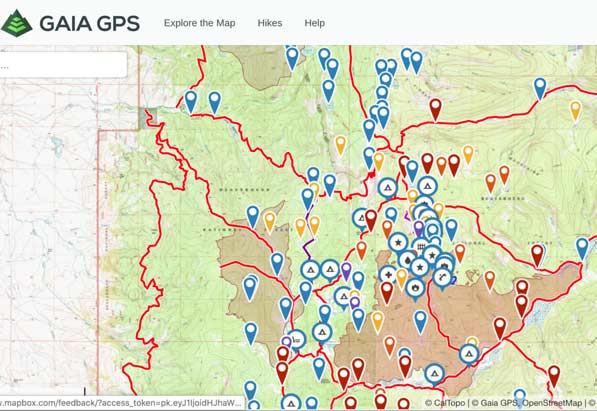
Combine your typed Hunt Plan with marked-up downloaded maps on your devices to use in the field. That means you will export waypoints and save folders in Gaia to make everything available for offline use in the field on your smartphone and GPS device.
One more thing to note about using technology in the field. You cannot rely on your smartphone to be your sole navigation tool; they can break. It’s a good idea to carry a Garmin or other GPS device for redundancy. Also, make sure your apps are up to date, store everything offline, and test well before you are in the field. Files can get corrupted, and a dry run will give you peace of mind. Pack spare batteries to recharge your devices, and keep cold temperatures in mind when thinking about your battery life. Make sure to bring spare cables as well. Solar chargers at camp can help recharge batteries while you are hunting.
Bonus: Some Notes on Hunting (What to do when you get there)
Myriad are the how-to treatises and instructive tales on how to hunt elk. Livesay offers a simple approach for any elk hunter—archery rut hunter and rifle season hunter alike.
“Most hunters are not in their spot early enough or late enough,” he says. “It’s that simple. That’s why knowing pressure zones to avoid, elk features to visit, and hunt routes to travel, are so critical.”
Read Next: 10 Things Elk Hunters Shouldn’t Leave Home Without
Hunt your way uphill in the morning as the pre-dawn thermals are coming downhill.
Spend midday at elevation, perhaps on a bench or flat.
Spend the evening hunting some best-bet spots until dark—not on a trail worrying your way to camp. “Having your route marked is essential for giving you the confidence to be there hunting in prime time.” Says Livesay. “You aren’t going to shoot an elk on your way to prime country at the crack of dawn, or on your way back to camp from prime country at last shooting light.”
Just being there–in the right country at the right time and away from other hunters—is the simple key. A written Hunt Plan produced from Livesay’s 6-step process puts you there. To take an even deeper dive into digital scouting, check out Treeline Pursuits, and Mark Livesay’s Youtube channel.
